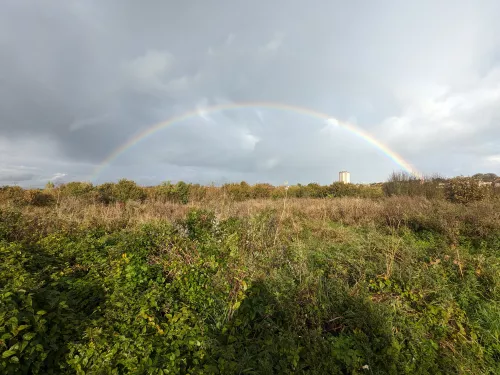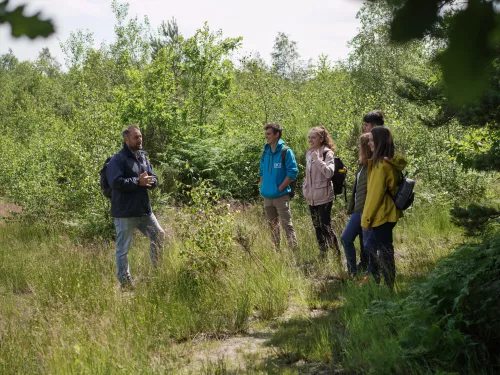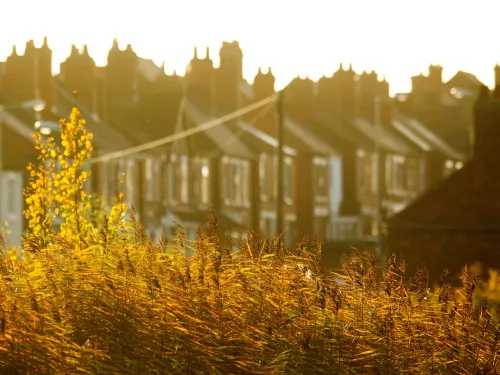
Biodiversity Net Gain for Farmers and Landowners in Kent
Learn more about how Kent Wildlife Trust are working with landowners to deliver high integrity biodiversity net gain.

Given the balance of risk and opportunity, Kent Wildlife Trust have developed a set of key principles to demonstrate the processes we follow across the group to ensure we meet genuine additionality concerns and work with partners who demonstrate real desire to support nature and drive biodiversity gain as part of the local nature recovery strategy.
Kent Wildlife Trust Group (KWTG)’s strategy sees BNG as being a key mechanism to fund nature restoration and therefore should be used as strategically as possible by linking it to making the Local Nature Recovery Network (LNRN) something real and effective on-the-ground as a major component of delivering on the UK’s 30x30 international biodiversity commitment.
Therefore, KWTG will adhere to the following principles when accepting BNG investment to deliver ‘offseting’ on their own land (current or future, potentially acquired through BNG deals), as well as that of third parties with whom we then work with directly in terms of management to maximise the chance of long-term, significant biodiversity impact through the use of BNG monies, whilst minimising any attached risks.
KWTG takes industry best practice guidelines and builds on them to ensure maximum long-term strategic value is gained from a given BNG scheme beyond the national minimal 10%, and seeking to exceed KCC’s preferred 20% uplift, whilst trying to secure gain beyond 30-year biodiversity benefits.
Kent Wildlife Trust wants to use BNG to enable genuine, scaled up habitat restoration and improvements in biodiversity and bio-abundance. We will therefore seek to incorporate key BNG funded sites into its estate, in line with our targets to double our estate, whilst working with 3rd party landowners to extend our research, monitoring and evidence work across the wider BNG landscape in Kent to demonstrate impact as well as to finesse the design of future schemes, and to try to get others to adopt its high integrity approach.
Mandatory BNG policy does not override any other policy or legal obligation and delivers against policy obligations (e.g., green space, GI, tree cover) before delivering net gain.
Kent Wildlife Trust recognises that many SSSIs and other designations do not deliver maximised biodiversity outcomes, let alone facilitate improved co-benefits from a given natural ecosystem. It will therefore seek relevant permissions to apply BNG payments to any area where genuine uplift is achievable with more resources, and it will work to influence policy seeking a pragmatic/ flexible approach that enables nature restoration.
Working, through our broader initiatives and through partners therein, we will work to improve the management and outcomes flexibility in BNG schemes – as well as the way the metric evolves – to make it more transparent and more compatible with “wilding” approaches and re-establishment of natural processes that we know are going to be critical to maintaining maximised biodiversity in a changing climate.
For example it should be possible for a reviewer to see how the conclusions were reached and the design developed in delivering BNG:
BNG assessment reports and Habitat Management and Monitoring Plans should clearly document these steps. This represents the end point that we would like to see implemented in Kent, but we recognise that this is going to be a step-wise process.
We will ensure that the mitigation hierarchy has been properly applied to any development that Kent Wildlife Trust receives funding from. This is to particularly avoid schemes where avoidance has not been applied, ensuring that irreplaceable habitats are not lost, and that sufficient effort has been applied to avoid impact on high distinctiveness habitats.
Special attention will also be paid to issues including habitat creation used as mitigation for impacts on protected species or site only equating to ‘no net loss’ and additional activities deliver net gain.
This also goes to trying to push all developers to do better.
Net gain design will be captured in the Monitoring and Management Plan to include:
In addition, risks associated with the scheme will be specifically addressed in a separated risk assessment that specifies how:
Kent Wildlife Trust Group will, wherever feasible, determine and quantify co-benefits derived from BNG schemes that it is directly or indirectly involved as well as working within the guidelines at the time the scheme is conceived to enable the landowner in question – including itself – to benefit from a broader suite of payment options that increase the likelihood of biodiversity gains being maintained beyond the 30 year BNG contract period.

Learn more about how Kent Wildlife Trust are working with landowners to deliver high integrity biodiversity net gain.

Biodiversity Net Gain will change how local authorities make planning decisions, here's how Kent Wildlife Trust Group can help,

Mandatory biodoversity net gain will ensure new developments in Kent will minimise impacts to nature.